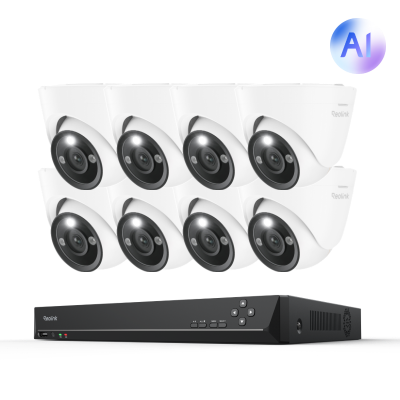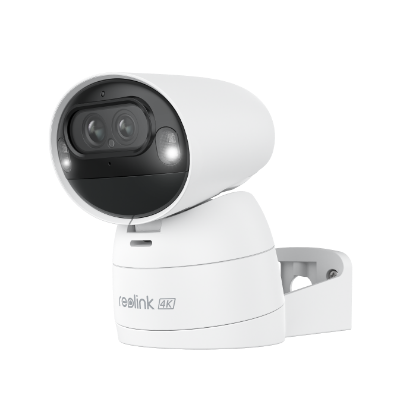Wide-Angle vs. Telephoto Lens: What's the Difference?

Are you having difficulty deciding between a wide-angle lens and a telephoto lens? It's a simple question. After you understand the differences and characteristics, you can make the right choice because specific focal lengths are designed for certain distinct shooting styles and subjects. In this article, we will explore the main differences between wide-angle and telephoto lenses and share with you the situations in which you should use a wide-angle and a telephoto lens.
- Basics of Wide-Angle and Telephoto Lens
- Wide-Angle Lens vs. Telephoto Lens: Major Differences
- Quick Comparison Between Wide-Angle and Telephoto Lens
- When to Use Wide-Angle and Telephoto Lens
- Wide-Angle Lens vs. Telephoto Lens: Pros & Cons
- Best Lenses for Different Types of Photography
- Wide-Angle and Telephoto Lenses in One Camera
- FAQs
- Conclusion
Basics of Wide-Angle and Telephoto Lens
We must learn fundamental concepts to explore the differences between wide-angle and telephoto lenses.
What is a Wide-Angle Lens?
A wide-angle lens is a lens that is capable of taking wider angles. It gets its name because it can shoot wider angles and cover a more excellent range of shots. There is a relation between focal length and angle of view: a larger diagonal angle of view means a shorter focal length. Therefore, a wide-angle lens generally refers to a camera lens with a focal length less than or equal to 35mm (converted to full-frame).
What is a Telephoto Lens?
A telephoto lens has a narrower angle of view, suitable for photographing subjects at long distances. You can think of it as a lens that acts like a telescope. It has a slight angle of view, so it has a limited range of shots, and subjects at close range may only fit partially into the frame. Generally speaking, a lens with over 80 mm focal length can be called a telephoto lens (converted to 35 mm size).
Wide-Angle Lens vs. Telephoto Lens: Major Differences
The difference between the wide-angle and telephoto lenses is mainly due to the different performance and usage caused by the imaging principle.
Field of view
The field of view is the noticeable difference when comparing a wide-angle lens to a telephoto lens. Wide-angle lenses have a wide field of view and can capture more of the scene in front of you. On the other hand, telephoto lenses have a narrower field of view.
Depth of view
Depth of field refers to the area of acceptable clarity before and after a well-focused focal point. Let's understand the extent to which the scene is evident in the frame. A shallow depth of field has a small area of clarity, and a deep depth of field has a large area of transparency. Generally speaking, the depth of field referred to here is the vertical clear distance of the image.
We can learn from the principle of camera imaging that long focal length and shallow depth of field may lead to short focal length and great depth of field. A camera with a shallow depth of field, i.e., a telephoto lens, can be used when we want the subject to stand out clearly in the picture. When we want the subject to encompass more of the issue, we can use a camera with a deep depth of field, i.e., a wide-angle lens.
Size
Generally, telephoto lenses will be larger than wide-angle lenses. Telephoto lenses typically have a focal length of around 200mm, while wide-angle lenses are about 30mm. So, a telephoto lens will weigh more than a wide-angle lens and add more burden to the photographer.
Quick Comparison Between Wide-Angle and Telephoto Lens
After knowing the significant differences between wide-angle and telephone lenses, you may still wonder if there are some other distinctions between them. Here is a comparison table to give you a glance at the differences.
When to Use Wide-Angle and Telephoto Lens
Wide-angle and telephoto lenses can be used in different scenarios. Here are some typical applications of them.
When to use a wide-angle lens
Due to the working principle, wide-angle lenses work best when you can get close to your subject and still want to see the foreground and background. But there's a point where there's so much in the frame and no focal point.
So, the recommended use of an angle lens is as follows:
- Take pictures of a food-filled table or crowds in small areas.
- Take photos of the sky, cities, and expansive panoramas of the terrain (if you don't mind the distortion).
- Increase the sense of immersion in pictures and movies.
- Take selfies conveniently without them being chopped out.
When to use a telephoto lens
The most obvious reason for using a telephoto lens is that the photographer is far away from the subject and needs to use a telephoto zero to bring the subject into focus.
The use of a telephoto lens is suggested in the following scenes:
- Shooting from the sidelines at sporting events
- Do professional wildlife and nature photography
- Try astrophotography
- Capture the moon
Wide-Angle Lens vs. Telephoto Lens: Pros & Cons
As far as knowing the pros and cons of different lenses is concerned, it will enable you to choose the most suitable lens for your shooting activities, which will always enhance the results. The pros and cons are illustrated below.
Wide-angle lens
Pros:
- You can take pictures of huge things, like buildings.
- They come in extremely wide apertures.
- They offer intriguing vantage points.
Cons:
- Options of a high caliber can be pricey.
- They don't look good in portraiture.
- Chances of the highest caliber might be expensive.
Telephoto Lens
Pros:
- You can better observe animals by providing more space between you and your subject.
- You can take pictures of far-off subjects without having to move.
- You can watch events like weddings and performances as a bystander.
Cons:
- These kinds of lenses are often heavy and clumsy.
- You may need to use a tripod to balance the lens.
- Wide-aperture telephoto lenses are usually costly.
Best Lenses for Different Types of Photography
Telephoto and wide-angle lenses can give the shooter different results when shooting other objects, which needs to be judged according to the needs.
Portrait
Portrait photographers usually prefer telephoto lenses. These lenses are better suited to the subject and have a shallow depth of field and less distortion, so the proportions of the people in the photo look more accurate.
Wildlife
Wildlife photographers often use telephoto lenses to photograph distant subjects, bringing them closer to the scene without having to be there. And it can emphasize the subject more, making for a better photo presentation.
Landscape
Landscape photographers may prefer a wide-angle lens to capture expansive landscapes; the deeper depth of field and shorter focal length allow them to encompass as much of the landscape as possible.
Architecture
Architectural photographers may need to use telephoto lenses to avoid perspective distortion and ensure straight lines. And telephoto lenses can reduce image distortion, as well as reduce the visual distance of the building, which can make the photo look more three-dimensional.
Wide-Angle and Telephoto Lenses in One Camera
Although wide-angle and telephoto lenses differ in many aspects, they each offer unique benefits for capturing various types of photos. To enhance the surveillance capabilities of their cameras, Reolink has integrated these two lenses into one device with the launch of the New Reolink Argus Track.
4K Dual-Lens Wi-Fi Solar/Battery Camera
4K 8MP Ultra HD, Auto-Zoom Tracking, Pan, Tilt & 6X Hybrid Zoom, Color Night Vision, Dual-Band Wi-Fi.
The wide-angle lens boasts 4K 8MP resolution and captures a wide field of view, leaving no possible blind spots. The telephoto lens allows for 6X hybrid zoom for finer details. This battery-powered security camera is completely wire-free, allowing for easy installation. You can connect it to your 2.4GHz or 5GHz WiFi for a seamless monitoring experience.
Another good option is the TrackMix WiFi. Although it may not be as compact as the Argus Track, it’s ideal for a professional setup. The combination of a 4K wide-angle lens and a 1080p telephoto lens provides comprehensive coverage. It also integrates seamlessly with a Reolink NVR for a complete camera system.
4K Dual-Lens PTZ Camera with Motion Tracking
4K 8MP UHD, Wide-Angle & Telephoto Lenses, Pan-Tilt-Zoom, Auto-Tracking, Person/Vehicle Detection, 2.4/5 GHz Dual-Band WiFi, Two-Way Audio.
FAQs
Which is better, a telephoto or wide-angle lens?
That depends on the need. If you want to focus on the entire scene, you need a deeper depth of field and, therefore, a wide-angle lens. Conversely, if you need to create a shallow depth of field and blur the background, achieving it with a telephoto lens is easy because the longer the focal length, the smaller the depth of field.
What is the difference between telephoto and wide-angle focal length?
Most people will come across both wide-angle lenses and telephoto lenses. The main difference between the two is the focal length. Wide-angle lenses have shorter focal lengths (24 mm, 18, 17, 16 mm, etc.), while telephoto lenses have longer focal lengths (e.g., 200, 300 mm).
Can I zoom with a telephoto lens?
Yes. You can zoom the telephoto lens in and out. The apparent advantage of a telephoto lens is the ability to adjust the focal length by zooming in and out. This allows you to change the composition of your photos and fine-tune your shots.
Do I need a wide-angle lens for a portrait?
No. A wide-angle lens is designed for exaggerating perspective in landscape photography. Wide-angle lenses elongate features and make close objects larger while further things become smaller in the frame.
Conclusion
People now have a growing demand for photography, whether it is daily street photography or professional photography. Therefore, you must understand the different lenses' characteristics to present the best results. Reading this article can inspire you. Please forward this article to your friends around you. We hope to see your comments and welcome any advice and thoughts.
Search
Subscribe for the Latest Updates
Security insights & offers right into your inbox




























































































































































